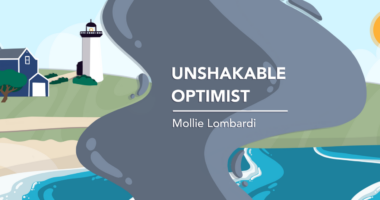I’m learning how to advocate for Parkinson’s legislation
A columnist shares her first experience in the world of public policy

Last week, I met with congressional staff to share my Parkinson’s story and gain support for the National Plan to End Parkinson’s Act. As an advocate, I often teach, write, and facilitate support groups, but this was my first experience with public policy.
According to the Michael J. Fox Foundation for Parkinson’s Research (MJFF), the National Plan to End Parkinson’s Act is “the first-ever legislation solely devoted to ending Parkinson’s disease.” After it was introduced in July 2022, 12 senators and more than 70 representatives signed on as co-sponsors, and in a tremendous showing of community support, constituents sent nearly 40,000 messages to Capitol Hill advocating for the bill’s passage.
Unfortunately, the bill ran out of time last year due to its late introduction. But the momentum will continue when it’s reintroduced to Congress this spring.
According to an August 2022 press release from Reps. Paul Tonko of New York and Gus Bilirakis of Florida, the congressmen who introduced the act to the House last year, the goal is to “unite the federal government in a mission to cure and prevent Parkinson’s, alleviate financial and health burdens on American families, and reduce government spending over time.”
In September, Sens. Shelley Moore Capito of West Virginia and Chris Murphy of Connecticut introduced the act to the Senate. Capito’s press release said, “The National Plan to End Parkinson’s Act will create an advisory council comprising members of every federal agency that supports research, care, and services for Parkinson’s, plus caregivers, patients, and other non-federal experts.” The council will facilitate coordination between federal government agencies, evaluate current federal Parkinson’s-related programs, develop a plan to prevent and cure the disease, and report on its progress annually.
Doing my part
As part of MJFF’s effort to gather congressional support for the National Plan to End Parkinson’s Act, I spoke with the deputy chief of staff for Rep. John Joyce of Pennsylvania.
As the meeting started, I felt anxious and practiced breathing to manage it. I was one of two constituents, and I was asked to go first. Although I stumbled while sharing my story, I accomplished my goal as a woman with young-onset Parkinson’s disease by demonstrating that both men and women, young and old, can develop the condition. Additionally, as a wife and mother, I was able to explain how the diagnosis affects not only me, but also my family.
The second speaker was the daughter of a man with Parkinson’s who shared her perspective as a caregiver. As she spoke about her father, I felt sadness for her family and fear for my own future.
Although this experience caused me some anxiety, my stumbling blocks will become stepping stones for future advocacy projects. The cure for Parkinson’s lies in us and our stories. Fear for my future motivates me to make a difference.
If passed, the National Plan to End Parkinson’s Act will provide the foundation for legislation that can benefit our community, and I will have played a role by sharing my voice.
How to become an advocate
Start by educating yourself on Parkinson’s disease and related policies using reputable resources, such as government or nonprofit websites and Parkinson’s News Today.
Next, visit the U.S. House of Representatives website to find out who your local representative is and how you can contact them. Reach out and express your support for the National Plan to End Parkinson’s Act. But don’t stop there. Talk with legislators about other issues affecting the Parkinson’s community, such as the link between pesticide exposure and symptom progression. The herbicide paraquat has been banned in numerous countries because of its connection to Parkinson’s and cancer, yet it’s still allowed in the U.S. We could change this by advocating to policymakers.
You might think that one person can’t make a difference, but they can. Recent strides in other disease communities, such as the approval of the first Friedreich’s ataxia treatment and an increase in federal research funding for Alzheimer’s disease, are examples of what advocacy and tenacity can accomplish.
The Parkinson’s community can do the same. According to the Parkinson’s Foundation, nearly 1 million people in the U.S. are living with the disease. By making our voices heard, we can be a force of nature and make a difference. Together, we can create our own future. The choice is ours.
Note: Parkinson’s News Today is strictly a news and information website about the disease. It does not provide medical advice, diagnosis, or treatment. This content is not intended to be a substitute for professional medical advice, diagnosis, or treatment. Always seek the advice of your physician or another qualified health provider with any questions you may have regarding a medical condition. Never disregard professional medical advice or delay in seeking it because of something you have read on this website. The opinions expressed in this column are not those of Parkinson’s News Today or its parent company, Bionews, and are intended to spark discussion about issues pertaining to Parkinson’s disease.








Helen
Spreading your reach into a new corner of advocacy! I received 2 newsletters from Rep. Joyce (R, PA) since your interview and neither one mentioned the education session about the National Plan to End Parkinson's. Nor has he signed on. And he's a doctor, so shame on him.
Lori DePorter
Write him back and send him a link to the article...I am meeting with Lloyd Smucker's office on Monday! Be the squeaky wheel!
Helen Stratton
Great idea-- I'm on it!
Mike
Lori,
You are admirable in getting our message to Congress. It is difficult to advocate…but your efforts are being rewarded in your career.
You are indeed taking Lemons and making Lemonade. Good job, Mike
Lori DePorter
Thank you, Mike. It helps to have a facilitator to make things move along seamlessly.